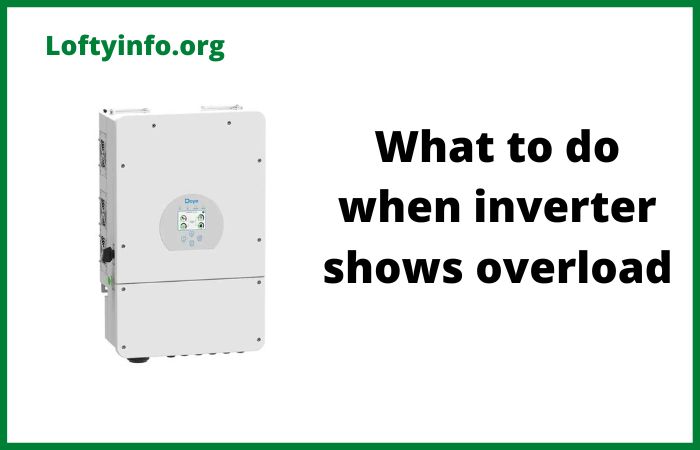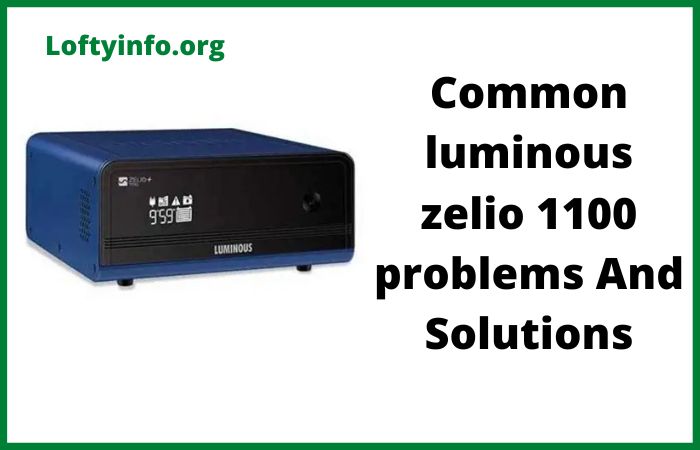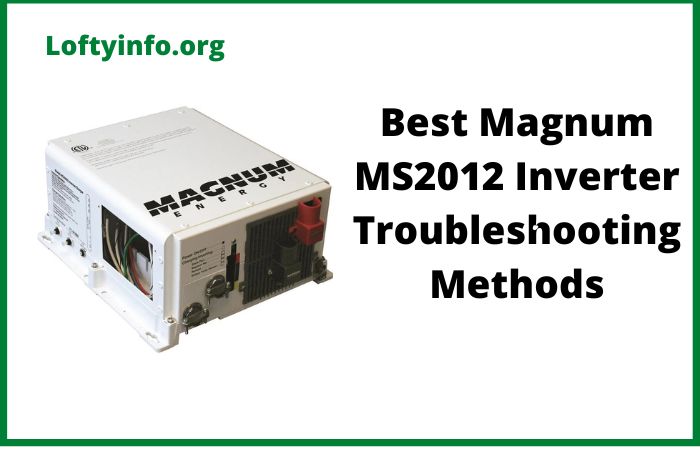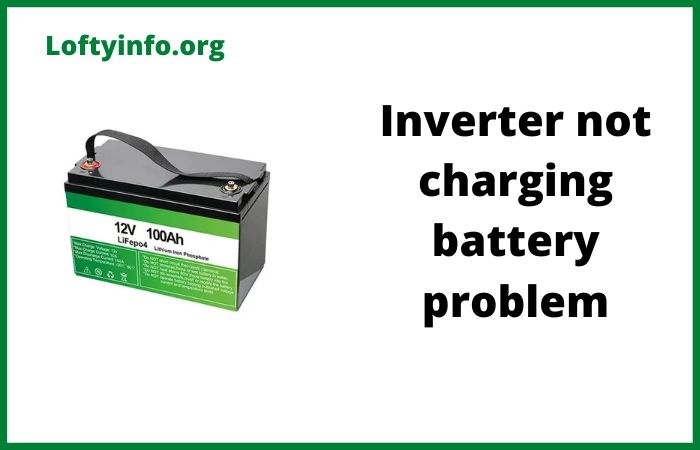What to Do When Inverter Shows Overload
Power inverters serve as the backbone of backup power systems by converting DC battery power into AC electricity that runs household appliances and electronics.
When your inverter displays an overload warning or shuts down unexpectedly it signals that connected devices are drawing more power than the unit can safely handle.
This situation leaves you without backup power during outages and can potentially damage your inverter if not addressed promptly.
Understanding the proper steps to resolve overload conditions ensures your power system operates reliably and protects your investment in backup energy equipment.
What to Do When Inverter Shows Overload
1) Immediately Disconnect All Connected Appliances
The first action you must take when your inverter shows an overload warning is to disconnect all connected appliances and devices from the inverter output.
This immediate response prevents potential damage to the inverter’s internal components and stops the overload condition from triggering thermal shutdowns or permanent failures.
Most inverters have built-in protection circuits that automatically cut power when overloaded but repeatedly triggering these protections shortens the unit’s lifespan and can cause cumulative damage to sensitive electronics.
Start by switching off the inverter using its main power button or disconnect switch.
This step ensures no power flows through the system while you work.
Unplug every device connected to the inverter outlets including obvious high-power appliances like refrigerators air conditioners and power tools as well as smaller items like phone chargers lamps and entertainment equipment.
Many people underestimate the cumulative load of multiple small devices which can easily exceed inverter capacity when combined.
Remove all extension cords and power strips from the inverter as these often have multiple hidden loads that contribute to the overload condition.
After disconnecting everything wait at least five minutes before attempting to restart the inverter.
This cooling period allows internal components to return to safe operating temperatures and lets protection circuits reset to their normal state.
The waiting period is especially important for inverters that experienced thermal overload as immediate restart attempts can trigger the protection again.
Use this time to make a list of all devices you had connected so you can calculate total power consumption and identify the source of the overload.
Once the waiting period ends turn the inverter back on without any connected loads. The unit should start normally and show green status lights or display normal operation on its screen.
If the inverter still shows an overload warning with nothing connected it indicates a potential internal fault requiring professional service or replacement.
A successful restart with no load confirms the overload was caused by excessive connected devices rather than inverter malfunction.
2) Calculate Total Power Requirements of Your Devices
Understanding the actual power consumption of your appliances and devices is essential for preventing future overload situations.
Most inverter users significantly underestimate how much power their devices draw leading to repeated overload events.
Accurate power calculations allow you to operate within your inverter’s capacity and prioritize which devices to run during power outages.
Begin by identifying the rated capacity of your inverter measured in watts or VA.
This information appears on the unit’s label specification sticker or user manual.
Pay attention to both continuous power rating and surge power rating as these represent different capabilities.
Continuous rating indicates the maximum wattage the inverter can supply indefinitely while surge rating shows the brief peak power available for starting motors and compressors.
Most inverters can handle surge loads 2 to 3 times their continuous rating for a few seconds.
Create a comprehensive list of every device you want to run on the inverter. For each item find its power consumption in watts.
This information typically appears on product labels specification plates or user manuals. Look for terms like rated wattage power consumption or input power.
Appliances with motors or compressors like refrigerators air conditioners and power tools require special attention because they draw much higher current during startup than during normal operation.
A refrigerator rated at 150 watts continuous may require 600 to 900 watts for several seconds when the compressor starts.
Add up the wattage of all devices you plan to run simultaneously.
This total must remain well below your inverter’s continuous power rating to ensure reliable operation.
Experienced users recommend loading the inverter to no more than 80 percent of its rated capacity to provide a safety margin for unexpected power spikes and ensure efficient operation.
For example a 1000 watt inverter should not run more than 800 watts of continuous load.
Include startup surge requirements in your calculations by ensuring your highest-surge device can start without exceeding the inverter’s surge rating.
Many modern appliances use switch-mode power supplies that can have poor power factor meaning they draw more current than their wattage suggests.
Devices with power factors below 1.0 effectively reduce your inverter’s usable capacity.
Computer power supplies battery chargers and some LED lighting fall into this category. When possible look for power factor specifications and account for this in your loading calculations.
3) Prioritize Essential Loads and Reduce Power Consumption
Once you understand your total power requirements the next step involves prioritizing which devices truly need backup power and finding ways to reduce overall consumption.
Strategic load management allows you to operate critical equipment within your inverter’s capacity while maintaining comfort and functionality during outages.
Categorize your appliances into three groups based on importance.
Essential devices include medical equipment, refrigerators containing food or medicine, basic lighting and communication devices like phones and internet routers.
Important but not critical items include entertainment systems, additional lighting and small kitchen appliances.
Non-essential loads include air conditioners, space heaters clothes dryers and purely convenience items.
During an overload situation focus exclusively on essential devices and eliminate everything else.
Implement a rotation schedule for devices that don’t need continuous operation. Refrigerators and freezers only need to run intermittently to maintain safe temperatures.
Run the refrigerator for 30 minutes then turn it off for 60 to 90 minutes to balance cooling needs with power availability.
Keep the doors closed during off periods to maintain temperature.
This cycling approach can reduce refrigerator power consumption by 60 to 70 percent while keeping food safely cold.
Apply similar strategies to other intermittent-use appliances like water pumps and battery chargers.
Replace high-power devices with more efficient alternatives where possible. Swap incandescent bulbs for LED lighting which uses 75 to 80 percent less power for equivalent brightness.
Use a laptop computer instead of a desktop system as laptops typically consume 50 to 80 watts compared to 200 to 400 watts for desktop systems.
Choose smaller appliances like a microwave oven instead of a conventional oven or a toaster oven instead of a full-size range.
These substitutions can dramatically reduce your total power draw without significantly impacting functionality.
Avoid using resistive heating devices on inverter power whenever possible.
Electric space heaters hair dryers electric kettles and similar appliances draw enormous power relative to their size.
A typical space heater consumes 1500 watts which exceeds the capacity of many residential inverters by itself.
A hair dryer can draw 1800 watts during operation. These devices should be your first elimination targets when reducing inverter load.
Consider alternative heating methods like propane heaters or simply using extra blankets and warm clothing during outages.
Monitor your power consumption in real time if your inverter has a display showing current wattage.
This feature helps you understand exactly how much power each device draws and make informed decisions about what to keep running.
Many users are surprised to discover which devices consume the most power and this knowledge enables better load management.
4) Check for Faulty Appliances and Wiring Issues
Sometimes inverter overload warnings result from malfunctioning appliances or electrical problems rather than simply too many connected devices.
Identifying and addressing these issues prevents ongoing problems and potential safety hazards that could damage equipment or create fire risks.
Systematically test each appliance individually to identify problem devices.
With the inverter running and no other loads connected, plug in one device at a time and observe the inverter’s display and status indicators.
A properly functioning device should show steady power consumption matching its rated specifications.
Watch for unusual behavior like flickering lights, intermittent operation or power consumption much higher than expected.
Appliances showing these symptoms may have internal faults causing excessive current draw.
Pay special attention to devices with motors, compressors or heating elements as these components commonly develop faults.
A refrigerator compressor with failing motor windings may draw double or triple its normal operating current.
An air conditioner with a seized fan motor creates a direct short that immediately overloads the inverter.
Power tools with worn brushes or damaged armatures exhibit similar excessive consumption.
Any device that feels unusually hot during operation or makes abnormal noises likely has internal problems contributing to overload conditions.
Inspect all power cords, extension cords and connections for damage.
Frayed wires, exposed conductors, melted insulation or loose connections create resistance that increases current draw and can cause arcing.
These conditions generate heat and may trigger overload protection even with moderate loads.
Replace any damaged cords immediately and ensure all connections are tight and secure.
Use appropriately sized extension cords for the connected loads as undersized cords create voltage drops that force appliances to draw more current to maintain operation.
Test your inverter’s battery bank condition as weak or failing batteries can cause apparent overload symptoms.
Batteries with reduced capacity cannot supply the high surge currents needed for motor starting which makes the inverter display overload warnings even when total wattage remains within specifications.
Use a multimeter to measure battery voltage under load. Healthy batteries should maintain voltage above 11.5 volts for 12-volt systems during moderate discharge.
Voltage dropping below this threshold indicates battery problems requiring replacement.
Examine the inverter’s input connections from the battery bank.
Loose terminals corroded connections or undersized cables restrict current flow from batteries to the inverter.
This restriction limits available power and causes premature overload shutdowns. Clean all battery terminals and cable connections removing corrosion with a wire brush.
Tighten all connections to manufacturer specifications and verify that cables are properly sized for the inverter’s maximum current draw.
Most inverters require very heavy gauge cables for the DC input with 2/0 or larger cable common for units above 2000 watts.
5) Upgrade Your Inverter or Add Parallel Units
When you consistently need more power than your current inverter provides despite optimizing loads and eliminating non-essential devices upgrading to a higher capacity unit becomes necessary.
This investment ensures reliable backup power for your actual needs and eliminates the frustration and potential equipment damage from constant overload situations.
Evaluate your true power requirements based on the calculations you performed earlier.
Add a 25 to 30 percent safety margin to your maximum expected load to account for unexpected surges and future expansion.
For example if your essential loads total 2000 watts you should consider an inverter rated for at least 2500 to 2600 watts continuous output.
This margin prevents operating at the very edge of capacity which reduces efficiency and increases component stress.
Research inverter specifications carefully when selecting an upgrade.
Pure sine wave inverters cost more than modified sine wave units but provide cleaner power that protects sensitive electronics and allows motors to operate more efficiently.
The power quality difference is especially important for modern appliances with electronic controls, variable speed motors and switch-mode power supplies.
Consider inverters with high surge ratings if you need to start motor-driven appliances like refrigerators, air conditioners or power tools.
A surge rating of 3 times continuous capacity provides good starting capability for most residential loads.
Some power systems allow installing multiple inverters in parallel configuration to increase total capacity.
This approach lets you expand power availability without replacing your existing equipment. Parallel operation requires inverters specifically designed for this capability with synchronization circuits that ensure both units share the load evenly.
Not all inverter models support parallel operation so verify this feature before purchasing additional units. Properly configured parallel inverters can double or triple your available power while providing redundancy if one unit fails.
Battery bank capacity must increase proportionally with inverter upgrades. A larger inverter draws more current from batteries to supply increased loads which depletes battery charge faster.
Calculate your desired runtime for essential loads and size your battery bank accordingly. The general formula is battery amp-hours equals load watts divided by battery voltage multiplied by runtime hours divided by 0.8 to account for efficiency and safe discharge limits.
For example running 2000 watts for 3 hours on a 12-volt system requires approximately 625 amp-hours of battery capacity.
Consider lithium batteries for upgrades as they provide more usable capacity and longer lifespan than traditional lead-acid batteries despite higher initial cost.
Professional installation is recommended for major inverter upgrades especially for units above 3000 watts.
Large inverters require heavy gauge wiring, proper grounding and careful integration with existing electrical systems.
Licensed electricians understand local electrical codes and can ensure safe, reliable installation that protects your home and equipment.
The investment in professional installation prevents costly mistakes and provides peace of mind that your backup power system operates safely and effectively.






